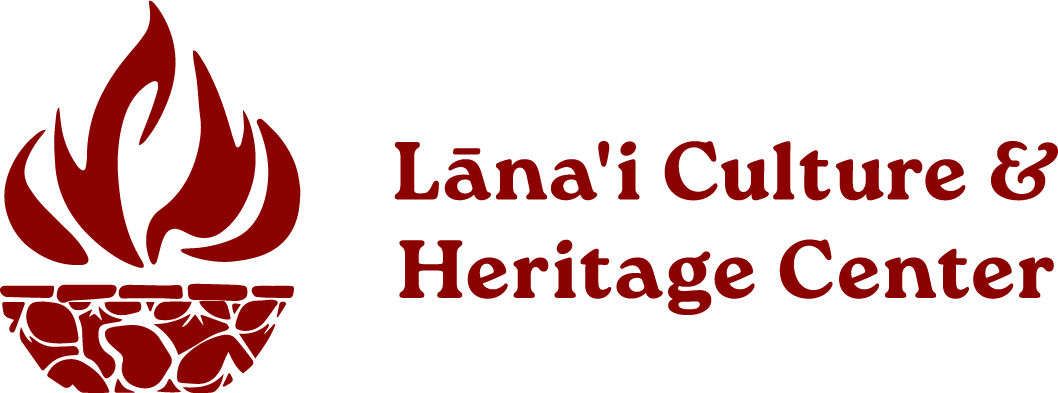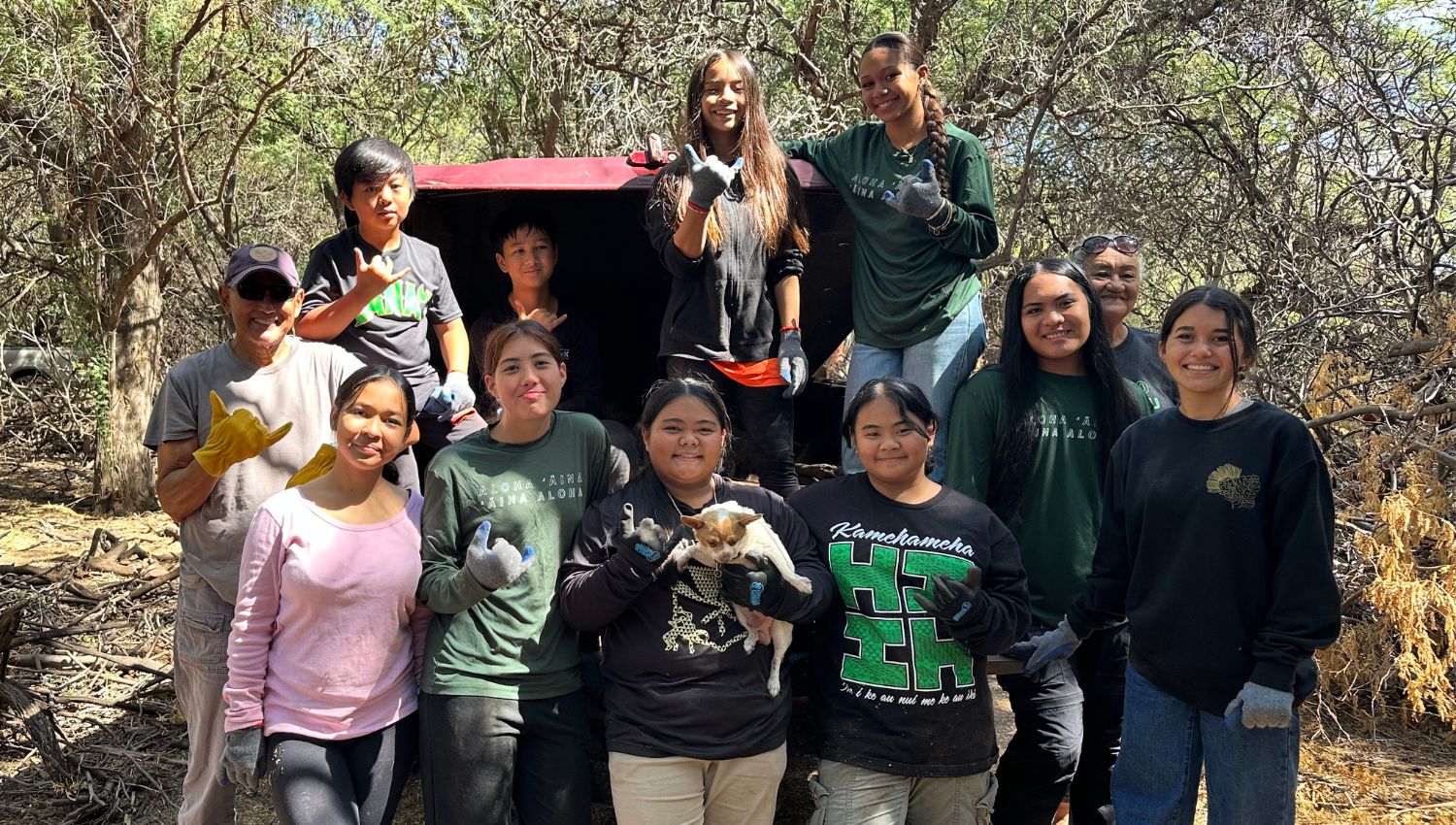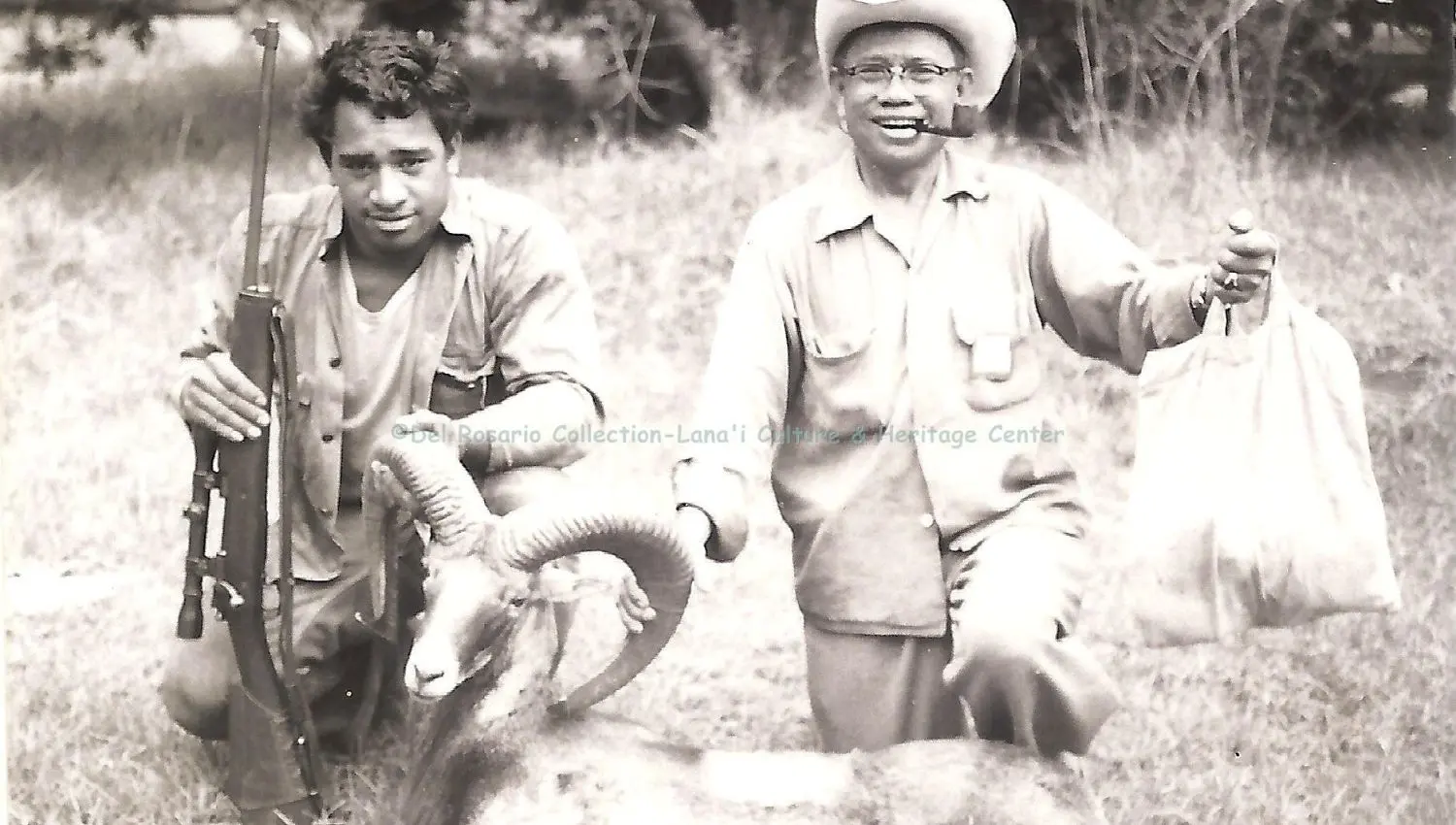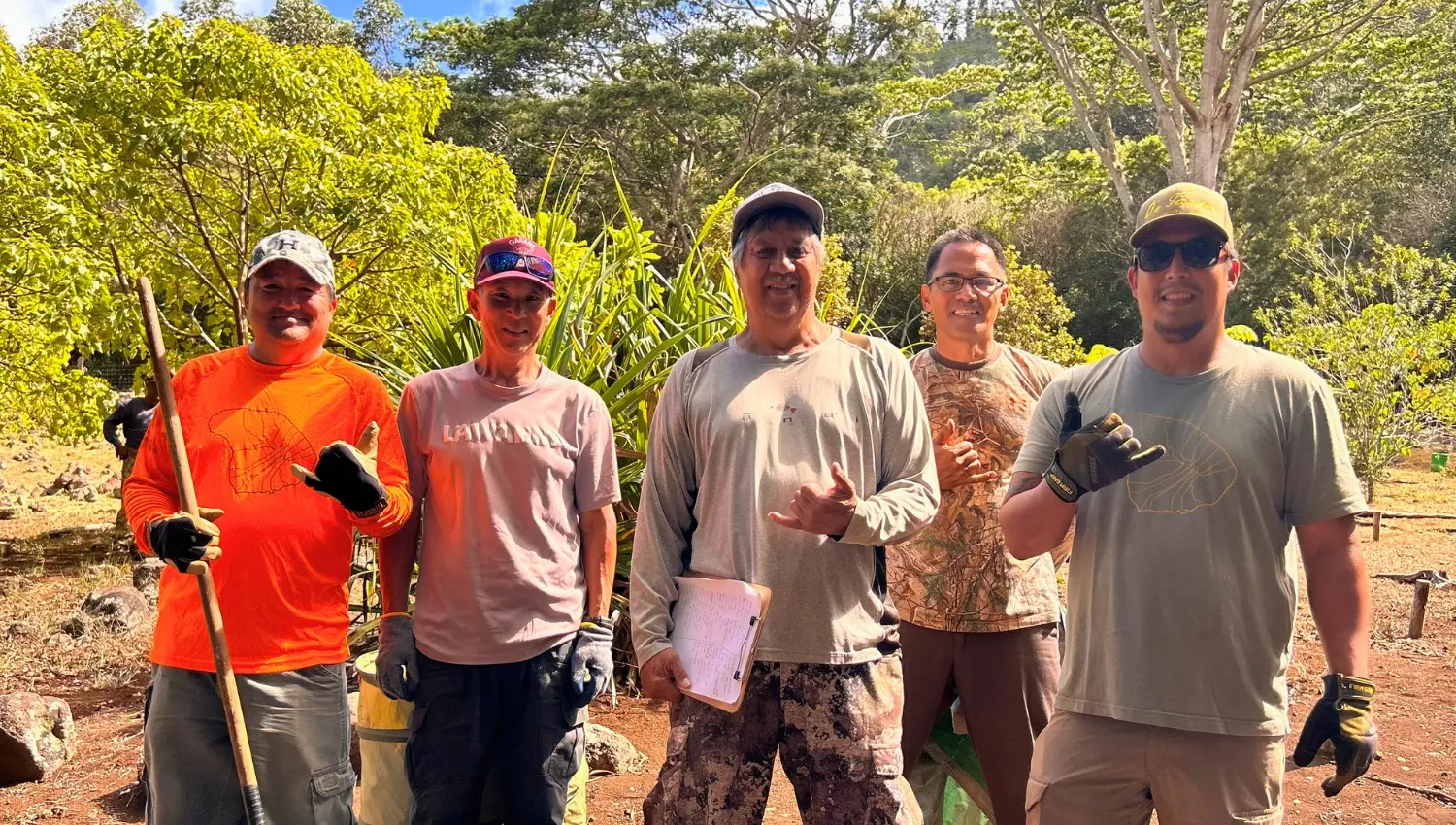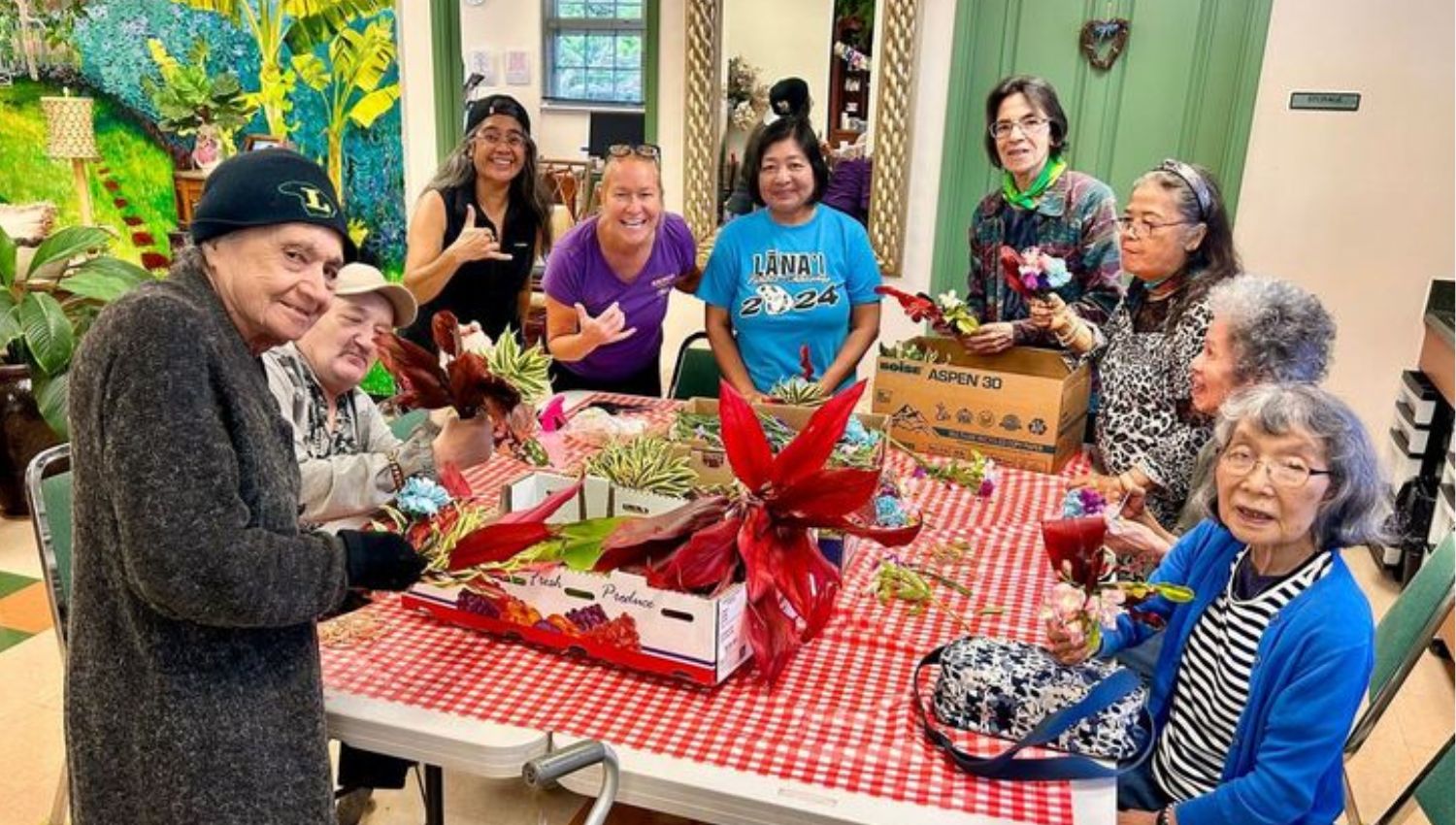Lāna‘i Youth Lead through Culture and Community
July 2025 — The 13th Annual E ‘Ike Hou iā Lāna‘i Summer Cultural Literacy Program brought together teens for a deeply enriching, place-based learning journey. Designed to nurture the next generation of island ambassadors, the program empowered Lāna‘i youth to carry forward the stories, traditions and values that define their homeland. At its heart, the program encourages students to grow as keepers of legacy while gaining a deeper understanding of Lāna‘i’s history, people and land. The 2025 theme, Hanohano Lāna‘i, celebrated the relationship between people and place—a reminder that aloha ‘āina is both a privilege and a responsibility.
Learning From the Past: Wisdom of the Kūpuna
One of the most meaningful moments of the program came through talk story sessions with Lānaʻi kūpuna, who graciously shared their knowledge of old Lānaʻi—a time of tight-knit communities, resilience and connection to ʻāina. Uncle Albert Halapē Morita, Aunty Pam Alconcel, Aunty Jonona Kaopuiki Alconcel, Uncle Melvin Catiel and Uncle Brad Oshiro offered heartfelt stories that helped students view their identity and kuleana in a new light. These intergenerational exchanges were more than history lessons—they were gifts of legacy.
Culture in Action: Mele, Oli and the ʻĀina
Throughout the program, students studied and practiced mele and oli unique to Lānaʻi, connecting them to ancestral voices and practices.
They also got their hands dirty in the community garden, where learning came alive through cultivation. While kalo is widely known as the staple of traditional Hawaiian diets, students discovered that ʻuala was the main crop for ancient Lānaʻi residents. Due to the island’s dry climate and limited water sources, ʻuala thrived more abundantly and became a staple crop in areas less suited for large-scale kalo cultivation—showing how adaptation and innovation sustained life on this island. At one time, a self-sustainable lifestyle existed on the island and supported a Native Hawaiian population that far exceeds today's total population of residents.
Stewardship and Sustainability: A Visit to Hulopoʻe Bay
Another powerful lesson came during a field trip to Hulopoʻe Bay on Lānaʻi’s southern coast. There, Uncle Dean Del Rosario spoke about the bay’s transformation from a crowded recreational and commercial boating destination to the serene Hulopoʻe that we all know. In 1976, the State of Hawaiʻi designated over 300 acres of surrounding coastal waters as a Marine Life Conservation District. This area stretches from the eastern cliffs near Mānele Small Boat Harbor to Kalukaoʻi Point and includes Puʻupehe Bay. Thanks to the strong community advocacy in the 1970s, the bay was preserved for future generations. Today, Hulopoʻe remains one of the few places in Hawaiʻi where abundant fishing continues to feed families, thanks to citizen advocacy and community stewardship.
The Imu: Learning the Power of Community Through Traditional Cooking
During the final week of the program, students prepared a traditional imu, an underground oven used for communal cooking. With guidance from Kapena Alconcel, who devoted an entire week as imu master, students learned that cooking in this way is more than just technique—it’s a practice of collaboration, humility and sharing. To make the imu possible, students reached out to neighbors, friends and family for natural resources like banana leaves, ti plants and stalks; much of which was harvested from their own backyards. Once cooked, the prepared food was delivered to families across the island, reinforcing the value that food is meant to nourish body and community, just as it was in ancient Hawaiʻi.
A Lasting Impact on Lānaʻi’s Future
The E ʻIke Hou iā Lānaʻi Cultural Literacy Program is more than a summer event. It is a movement rooted in aloha, designed to grow leaders who understand the richness of their heritage and the importance of protecting it. Every chant, every plant, every story and every shared meal is part of building a future that’s grounded in legacy, culture and community. This year, former participants Evelyn and Tysen returned as kōkua, guiding and mentoring new students. Their leadership highlighted the program’s long-term impact—where learning doesn’t end, it evolves into giving back. Held annually for youth ages 12 to 17, this program continues to strengthen the foundation of Lānaʻi’s identity—ensuring the next generation is ready to honor, uplift, and protect the island they call home.
